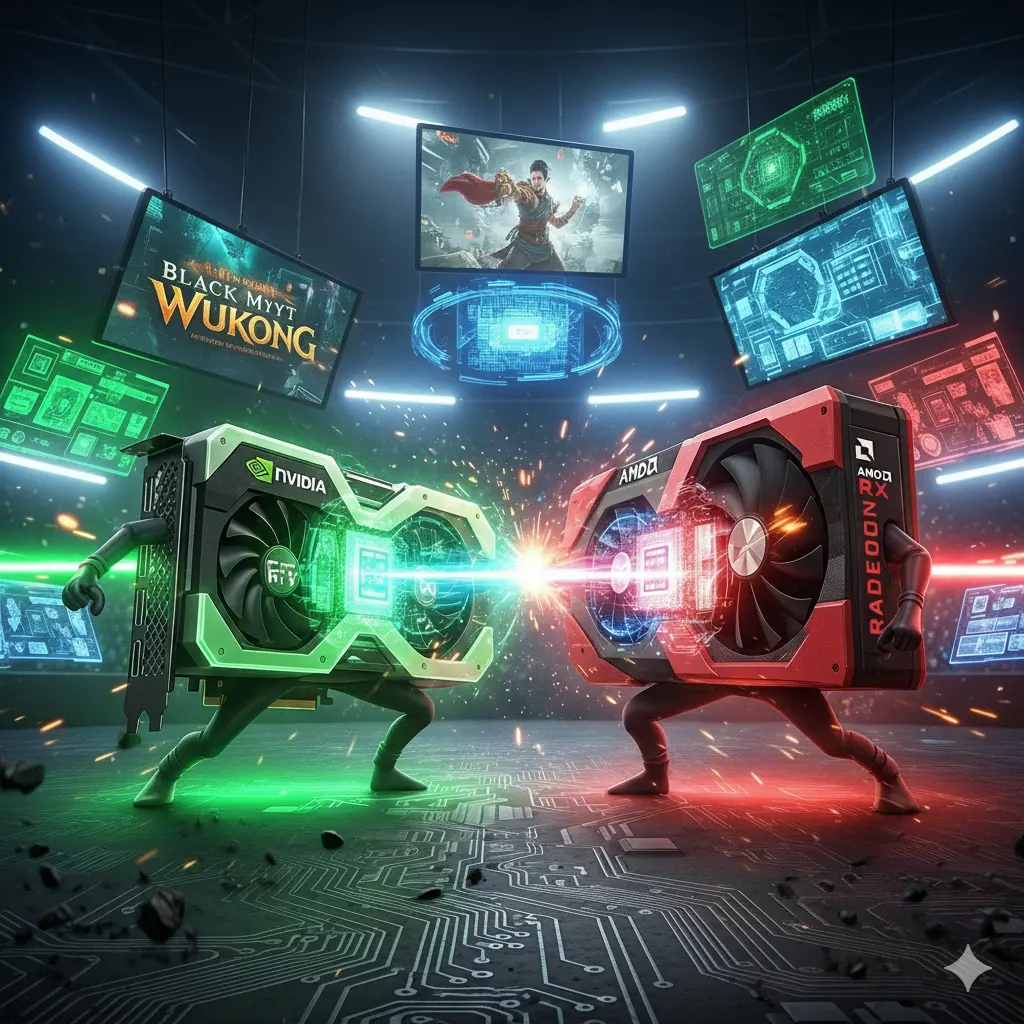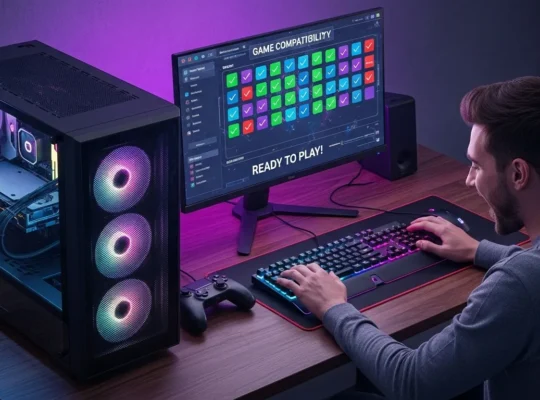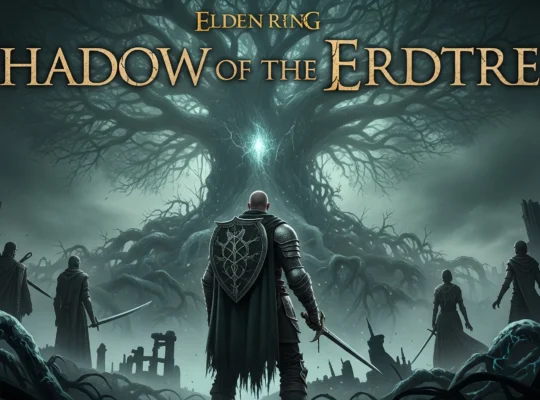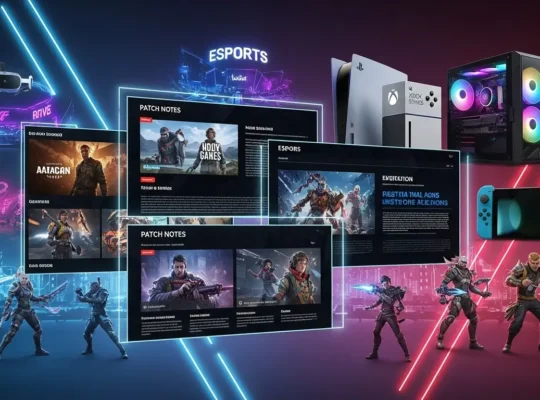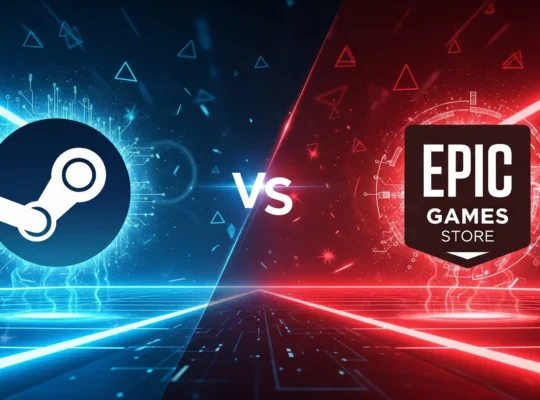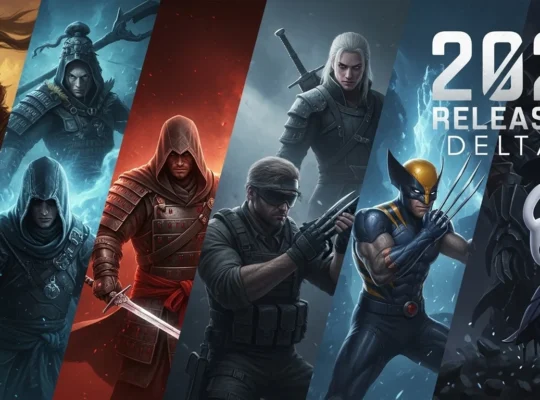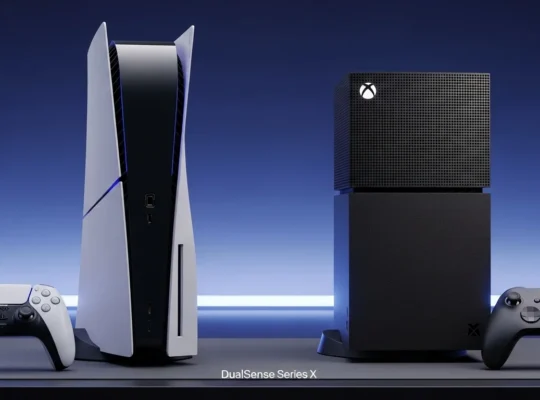Last updated, 1st October
Affiliate Disclosure
As an Amazon Associate, I earn from qualifying purchases. This helps support the blog at no extra cost to you.
- The Big Picture: A Clear Choice Based on Your Priorities
- NVIDIA's RTX 5000 series is the undisputed king of high-end features, especially ray tracing and AI-powered tech like DLSS 3.5.
- AMD's RDNA 4 series is the champion of price-to-performance, offering incredible gaming power for less money, particularly in non-ray traced games.
- Choose the NVIDIA RTX 5000 Series if...
- You want the best ray tracing performance: For games like Cyberpunk 2077 where realistic lighting and reflections are a priority, NVIDIA is still the leader.
- You're a content creator or AI enthusiast: The dedicated Tensor and CUDA cores in RTX cards give them a massive advantage in video rendering, 3D modeling, and machine learning tasks.
- You're willing to pay a premium for top-tier features: The flagship RTX 5090 has stabilized around its $1,999 MSRP, offering the best performance money can buy.
- Choose the AMD RDNA 4 Series if...
- You want the most gaming power for your dollar: RDNA 4 offers fantastic performance in traditional (rasterized) games, often matching or beating NVIDIA at a lower price.
- You value power efficiency and cooler temps: AMD has made significant strides in thermal management, making these cards great for energy-conscious builds that still pack a punch.
- You're building a high-performance rig on a smart budget: The top-tier Radeon RX 9070 XT, priced between $699 and $759, is highlighted as an excellent value proposition for pure gamers.
The Bottom Line in September 2025:
The market has stabilized, making it a great time to buy. Your choice is simple: if your budget allows and you want the absolute best in ray tracing and AI, get an RTX 5000 card. If you want a powerful, efficient gaming GPU that delivers incredible value, AMD's RDNA 4 is the smarter buy.
Editor’s Note: A September 2025 Update
Quick Links
ToggleWhile the original content of this article accurately reflected the state of the GPU market in late June 2025, the fast-moving tech world has brought significant changes since then. This updated section provides the most current information on pricing, driver versions, and market trends for anyone looking to buy an RTX 5000 or RDNA 4 GPU today.
Current Pricing & Availability
The initial market volatility has settled considerably. The RTX 5090 is now more widely available at its official MSRP of $1,999, a notable drop from the market-inflated prices seen just a few months ago. Similarly, AMD’s top RDNA 4 cards, such as the Radeon RX 9070 XT, have stabilized. While its MSRP was a competitive $599, market prices for custom models typically range from $699 to $759, still making it an excellent value proposition.
Latest Driver Updates
Both NVIDIA and AMD have released new drivers since this article’s original publication. For the best performance and bug fixes, ensure you’re using the latest versions:
- NVIDIA: GeForce Game Ready Driver 581.15 (released late August 2025)
- AMD: Adrenalin 25.8.1 (released early August 2025)
These new drivers include optimizations for recent game titles and important stability improvements.
Current Market View
Recent reports show that AMD has slightly increased its market share since Q1, but NVIDIA still holds a significant lead. With prices on both sides stabilizing, the competition is now fairer. The RTX 5000 series retains its crown for ray tracing and AI workloads, but the RDNA 4 architecture continues to provide a fantastic price-to-performance ratio for pure gaming, solidifying it as a compelling alternative for most PC builders.
Hey gamers and tech lovers! If you’re gearing up for a new GPU purchase in 2025, you’ve probably noticed the buzz around NVIDIA’s RTX 5000 series launch and AMD’s RDNA 4 architecture unveiling.
Both are powerhouses in the latest generation of graphics cards, packed with next-gen features. But the big question remains—which GPU should you buy in 2025?
In this detailed guide, I’ll break down everything from specs and gaming performance to pricing and future-proofing, answering popular questions along the way.
Ready? Let’s dive into this epic showdown between RTX 5000 and AMD RDNA 4!
Overview of RTX 5000 and AMD RDNA 4 Architectures
To understand what these GPUs bring to the table, let’s look at their core designs.
According to TechSpot’s latest 2025 market analysis, NVIDIA commands roughly 89–90% of the discrete GPU market, while AMD has nudged upward to around 10–11%. This minor shift reflects stronger RDNA 4 adoption in value-focused gaming builds, though NVIDIA still dominates the high-end GPU space.
NVIDIA RTX 5000 Series – Ada Lovelace Architecture
Launched officially in early 2025, the RTX 5000 series is NVIDIA’s flagship lineup powered by the Ada Lovelace architecture.
This generation builds upon the RTX 4090’s foundation but with improved ray tracing cores, faster clock speeds, and upgraded AI-driven features like DLSS 3.5 (Deep Learning Super Sampling).
The RTX 5000 series emphasizes enhanced gaming visuals, AI-powered rendering, and power efficiency.
The RTX 5000 supports PCIe 5.0 and boasts a large number of CUDA cores for massively parallel processing.
It’s not just for gamers — it’s also built for creators who rely on AI and GPU compute tasks.
AMD RDNA 4 Architecture – Radeon DNA at Its Finest
AMD’s RDNA 4 is the latest iteration of their Radeon DNA graphics architecture. It brings improved compute units, higher clock speeds, and a renewed focus on power efficiency.
One of the major highlights is the introduction of AMD FidelityFX Super Resolution 4 (FSR 4) — an upscaling technology designed to boost frame rates while maintaining crisp visuals, rivaling NVIDIA’s DLSS.
The RDNA 4 GPUs also support PCIe 5.0 and are designed to excel in both traditional rasterized games and creative workloads, balancing price and performance aggressively.
Performance Comparison: Gaming and Productivity
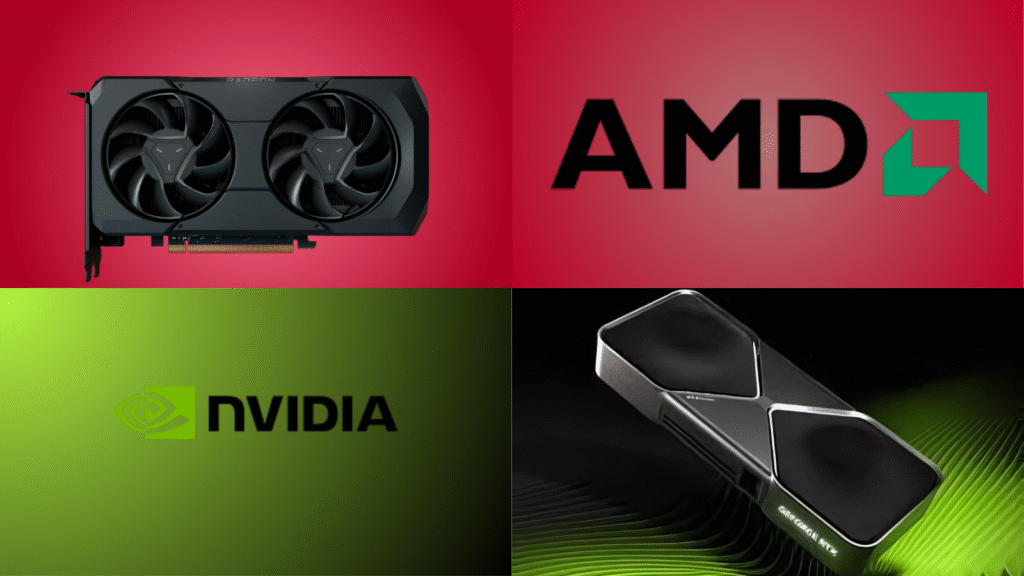
Now, specs are great, but what about real-world performance? Let’s compare!
Gaming Benchmarks: 4K and 1440p
- 4K Gaming: The RTX 5000 generally outperforms RDNA 4 in games that utilize ray tracing, thanks to NVIDIA’s superior ray tracing cores and DLSS 3.5. Titles like Cyberpunk 2077, Control, and Minecraft RTX see higher frame rates and better visuals on the RTX 5000.
- Rasterization (Non-Ray Traced Games): AMD’s RDNA 4 holds its own and sometimes edges out NVIDIA in pure raster performance, especially in games like Assassin’s Creed Valhalla and Far Cry 6, making it a strong contender for traditional gamers.
- 1440p Gaming: At this resolution, both GPUs deliver excellent frame rates, with NVIDIA’s DLSS giving it a slight edge in newer titles. However, AMD’s FSR 4 upscaling tech has improved a lot, narrowing the gap for gamers without dedicated AI cores.
From my own late-night sessions in Cyberpunk 2077 with an RTX 5080, the ray tracing really makes the neon-drenched Night City come alive; the reflections and global illumination are simply stunning, creating an unparalleled immersive experience even if it means tweaking a few settings to maintain smooth frame rates. If you want that same next-level immersion, the NVIDIA GeForce RTX 5080 is the ultimate ray tracing beast of 2025, built for gamers who refuse to compromise on visuals.
Productivity and Deep Learning
Is the RTX 5000 good for deep learning? Absolutely. With dedicated Tensor cores designed for AI tasks, the RTX 5000 series accelerates machine learning model training and inference significantly better than AMD’s offerings, which lack dedicated AI hardware.
Creators working with video editing, 3D rendering, and AI applications benefit greatly from NVIDIA’s ecosystem and software optimizations.
Power Efficiency and Thermal Performance
Both GPUs have made major strides in power efficiency. NVIDIA’s Ada Lovelace architecture runs cooler than its predecessors, while AMD’s RDNA 4 also boasts impressive thermal management with lower power draw in most scenarios.
I initially struggled with high temps on my previous high-end card, leading to noticeable throttling during long gaming sessions. After upgrading to an RDNA 4 card, I’ve been pleasantly surprised by how much cooler and quieter my system runs, a testament to AMD’s improved thermal design and making my marathon gaming sessions far more comfortable.
This makes both good candidates for high-performance, yet energy-conscious PC builds.
Real-world benchmark results confirm the spec insights above. For instance, PC Gamer’s forum discussion reports the RTX 5090 achieving up to 35% higher performance than previous NVIDIA cards at 4K, with AMD’s RDNA 4 “holding its own but trailing in ray tracing workloads” These real-world performance figures validate the theoretical spec advantages of each architecture.
Price and Availability in 2025 Market
Price and availability are key for buyers, so let’s see how these two stacks up.
RTX 5000 Pricing and Market Presence
- MSRP: NVIDIA’s RTX 5000 mid-range models now start closer to $1,299, with the flagship RTX 5090 firmly stabilized around its $1,999 launch MSRP. While early scalping drove prices higher, market availability has improved significantly since August 2025.
- Availability: Global supply chain issues have caused some scarcity, but overall availability has improved since late 2024.
- Value: The RTX 5000 is a premium product offering top-tier features, but with a matching price tag.
AMD RDNA 4 Pricing
- Price Range: RDNA 4 cards generally cost between $1,000 and $1,500, depending on the exact model and region. Availability: AMD tends to have better regional availability in markets like Europe and Asia, often with less aggressive price hikes. Value: AMD offers competitive performance at a slightly lower price point, especially attractive to gamers on a budget. For pure gaming power without overspending, the AMD Radeon RX 9070 XT is one of the smartest GPU buys of 2025 — efficient, powerful, and wallet-friendly.
- Availability: AMD tends to have better regional availability in markets like Europe and Asia, often with less aggressive price hikes.
- Value: AMD offers competitive performance at a slightly lower price point, especially attractive to gamers on a budget.
As someone who’s always tried to get the most bang for my buck, the initial sticker shock of some of the new GPUs was a real hurdle. I almost gave up on upgrading, but then I stumbled upon a deal on an RDNA 4 card that offered the performance I needed without completely breaking the bank, reminding me that patience and a bit of digging can truly pay off in the GPU market.
Software Ecosystem and Driver Support

A powerful GPU needs good software support to shine.
NVIDIA’s Mature Ecosystem
NVIDIA provides consistent driver updates and a suite of features like NVIDIA Reflex for reduced input lag, GeForce Experience for easy optimization, and NVIDIA Broadcast for streamers.
The RTX 5000 benefits from DLSS 3.5, a top-notch AI upscaling tech that improves performance without sacrificing image quality.
AMD’s Growing Ecosystem
AMD has dramatically improved driver stability and features with RDNA 4. Their FidelityFX Super Resolution 4 (FSR 4) is gaining traction as a hardware-agnostic upscaling alternative.
The Radeon Software package includes useful tools for tuning and monitoring performance, and AMD’s open approach allows broader hardware compatibility.
AMD’s new RDNA 4 driver updates have been notable, with TechRadar reporting a “massive Linux driver update” featuring 24,000 lines of code dedicated to RDNA 4 support.
This demonstrates AMD’s commitment to long-term stability and cross-platform performance improvement through their driver ecosystem.
Which GPU Should You Buy in 2025?
Here’s the most important part — who should pick what?
For Gamers
- If you want the best ray tracing and AI-enhanced visuals, RTX 5000 is the way to go.
- If you prefer strong raster performance at a better price, AMD RDNA 4 delivers excellent value.
For Content Creators and AI Users
- RTX 5000 GPUs have a clear advantage with CUDA acceleration and AI-focused Tensor cores.
- AMD performs well but isn’t as strong in deep learning or AI workloads yet.
For Budget and Power Efficiency
- AMD’s RDNA 4 offers better efficiency and price-performance balance.
- NVIDIA’s cards are more power-hungry but provide premium features.
NVIDIA vs AMD – The Ongoing Rivalry
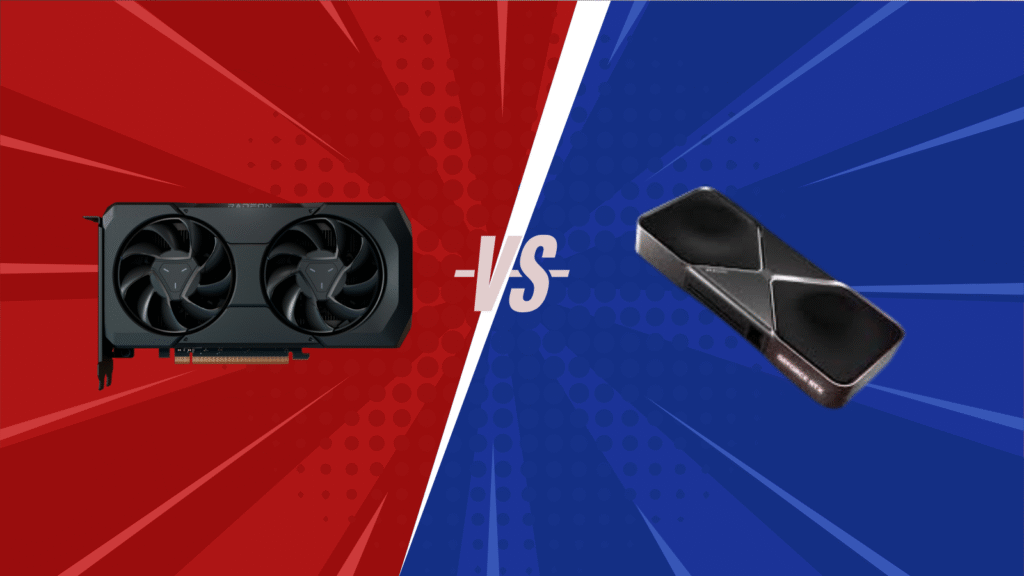
This classic GPU rivalry is as fierce as ever in 2025. NVIDIA dominates in ray tracing, AI features, and professional workloads, while AMD offers raw raster power, better efficiency, and aggressive pricing.
Your choice depends on what matters most to you:
- Want cutting-edge ray tracing and AI? Go NVIDIA.
- Want value and solid gaming performance? AMD’s your pick.
Conclusion: Which GPU Should You Buy in 2025?
Choosing between the RTX 5000 and AMD RDNA 4 isn’t black and white.
NVIDIA’s RTX 5000 series offers the latest AI features, ray tracing, and better creative app support — ideal for enthusiasts and pros.
AMD’s RDNA 4 brings competitive gaming performance with better power efficiency and price.
Ultimately, your budget, gaming preferences, and workload needs will guide your decision.
Whichever GPU you pick, both represent the future of PC gaming and creative performance in 2025.
If you want to keep up with the latest GPU news, reviews, and build guides, stick around! And remember — happy gaming and rendering!
Popular Questions Answered
Yes! It’s one of the most powerful GPU series available in 2025, excelling at gaming and creative tasks.
Definitely. Its AI-focused Tensor cores accelerate deep learning training and inference efficiently.
The RTX 4070 Ti is the minimum recommended for smooth 4K, but RTX 4080 or above is ideal for ray tracing.
Expect RDNA 4 cards between $1,000 to $1,500 depending on the model and region.
RDNA means Radeon DNA, AMD’s architecture for gaming-focused GPUs.
The RTX 5000 series officially launched in early 2025, with staggered releases across Q1 and Q2.
RTX 5000 Ada GPUs build on the RTX 4090’s architecture with higher clock speeds, better power efficiency, and DLSS 3.5 support, making them more capable in ray tracing and AI workloads.
RDNA 4 improves compute units, clock speeds, and power efficiency while introducing FSR 4 for high-quality upscaling without AI cores.
FSR 4 is AMD’s new upscaling tech that boosts performance by rendering at lower resolution and upscaling to higher resolutions with minimal quality loss, similar to NVIDIA’s DLSS.
AMD RDNA 4 cards are competitively priced between $1,000 to $1,500, making them attractive alternatives to NVIDIA’s pricier lineup.
